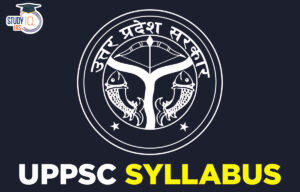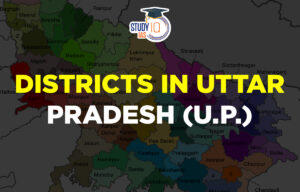Daily Current Affairs for UPSC 2023
Q) Which one of the following statement is correct about ‘Deepor Beel’?
- It is a manmade lake located in the state of Assam.
- It is located in a former channel of the Manas River.
- The Kalmani and Basistha rivers are its main water sources.
- It is a wetland that is being considered for Ramsar site designation.
Daily Current Affairs for UPSC – 6 January 2023
Explanation:
- Option (1) is incorrect: Deepor Beel is a perennial freshwater lake located 10 km southwest of Guwahati city of the state of Assam. Asian elephants, leopards, jungle cats, barking deer, Chinese porcupines and sambar are some of the fauna found in the beel. Flora of the beel mainly consists of aquatic species such as water Lily and water hyacinth. The lake wetland is the source of livelihood for fishing communities. It acts as a natural storm-water reservoir basin for Guwahati.
- Option (2) is incorrect: Deepor Beel is located in a former channel of the Brahmaputra River. It faces threats from contamination caused due to garbage dumps from nearby Guwahati city; unplanned urbanization and encroachment are reducing the wetland area; feeder river channels are vanishing, resulting in siltation; invasive plant species have affected the survivability of local species.
- Option (3) is correct: The Kalmani and Basistha rivers along with local monsoon runoff are the main water sources for Deepor Beel. The Rani and Garbhanga hills, the habitat of the Asiatic elephants in the southern side of the beel, are part of this ecosystem. Some parts of the hill landscape of the wetland are getting denuded owing to stone mining and earth excavation while heaps of unsegregated municipal solid waste from Guwahati is getting dumped in the Boragaon landfill site near the wetland.
- Option (4) is incorrect: Deepor Beel is the only wetland in Assam designated as a site of importance for “conservation and sustainable use” under the Ramsar Convention on Wetlands, the international treaty that is named after the city of Ramsar in Iran, where it was signed in 1971. The wetland sustains over 200 species of birds. It has been selected as one of the Important Bird Area (IBA) sites by Birdlife International.
Q) Consider the following statements about small savings schemes in India:
- The yields on government securities are used to compute the interest rates for small savings schemes.
- Kisan Vikas Patra and Sukanya Samriddhi Yojana Scheme are examples of the small savings schemes.
- The central government can finance its fiscal deficit with funds from the National Small Savings Fund.
- The Reserve Bank of India is in charge of managing the National Small Savings Fund.
Which of the statements given above are correct?
- 1, 2 and 3 only
- 2, 3 and 4 only
- 1 and 4 only
- 1, 2, 3 and 4
Answer: A
Explanation:
- Statement 1 is correct: Small Savings Schemes are designed to provide safe and attractive investment options to the public and at the same time to mobilise resources for development. Method to calculate interest rates for small savings schemes has been provided by the Shyamala Gopinath Committee. The committee had recommended that the interest rates of various schemes be 25 to 100 basis points higher than the yields of similar maturity government bonds. As per Reserve Bank of India guidelines, the rates on these small savings schemes are calculated on the yields on government securities (G-secs). The interest rates of savings schemes are decided by the government and vary every 3 months to a year. Reference period for small savings rates for the January-March quarter is September-November.
- Statement 2 is correct: Various categories of Small Saving Scheme are:
- Kisan Vikas Patra that can be purchased from the PO. The patra or certificate costs INR 1000/- (minimum). The maturity time is 113 months.
- Sukanya Samriddhi Yojana Scheme (SSYS) a government-backed deposit programme for girls. It was introduced as a part of the “Beti Bachao Beti Padhao” campaign, aids in providing for a girl child’s financial needs and offers income-tax advantages under section 80C.
- Senior Citizen Savings Account, which can be opened by anyone who is over 60 years to age. It qualifies for Section 80C tax benefit.
- Public Provident Fund has lower limit of balance holding INR 500 and upper limit of INR 1.5 Lac. The maturity time of PPF account is 15 years.
- Post Office Recurring Deposit is a saving scheme that can be continued with Indian Postal Offices. In this scheme minimum balance of Rs. 10/- should be maintained every month.
- Post Office Fixed Deposit.
- Statement 3 is correct: All deposits received under various small savings schemes are pooled in National Small Savings Fund (NSSF). Money in the fund is used by the central government to finance its fiscal deficit. NSSF was established in 1999 within the Public Account of India. It combines the collections obtained from different small saving schemes. The pool from all such schemes is credited to the NSSF and withdrawals under small saving schemes by depositors are made from this Fund.
- Statement 4 is incorrect: National Small Savings Fund (NSSF) is administered by the Ministry of Finance, Government of India, under the National Small Savings Fund (Custody and Investment) Rules, 2001, derived from Article 283(1) of the Constitution. Recently, Finance Ministry hiked the interest rates for some small savings schemes by 20-110 basis points for the January-March quarter.
Q) With reference to stubble burning, consider the following statements:
- By burning the stubble, volatile organic chemicals and polycyclic aromatic hydrocarbons are emitted.
- It makes the soil fertile by increasing the number of beneficial soil bacteria.
- In order to prevent stubble burning, the Indian Council of Agricultural Research created the bioenzyme named PUSA.
Which of the statements given above are not correct?
- 1 and 2 only
- 1 and 3 only
- 2 and 3 only
- 1, 2 and 3
Explanation:
- Statement 1 is correct: Stubble burning is a practice of removing agricultural waste from the field by setting on fire the straw stubble (parali) that is left on the land after harvesting of grains like paddy, wheat etc in order to prepare it for the next round of seeding. The major problems of the burning of crop residues are pollution and greenhouse gas emissions that lead to global warming. Burning stubble emits toxic gases such as Carbon Monoxide (CO), Methane (CH4), Polycyclic Aromatic Hydrocarbons (PAH), and Volatile Organic Compounds (VOC). These directly contribute to environmental pollution and are also responsible for the haze in Delhi and the melting of Himalayan glaciers.
- Statement 2 is incorrect: Soil degradation is another problem due to the burning of crop residues. Burning stubble radiates heat that kills fungus and bacteria which is essential for soil fertility. The main problem behind crop burning is the rotational cropping system of rice and wheat where farmers burn stubble as they have to quickly clear the fields for the next crop. Due to a shortage of labour and time, when paddy is harvested by a combined harvester and thresher, particularly by large farmers in Punjab, the machine leaves behind a significant length of straw and stubble on the field.
- Statement 3 is incorrect: A bio-enzyme called PUSA has been developed by the Indian Agriculture Research Institute (not Indian Council of Agricultural Research) as a solution to stubble burning. One of the recent innovations that could help farmers to manage crop residues effectively is by employing agricultural machines like happy seeder, Rotavator, Baler, Paddy straw chopper, etc. but these machines are too costly. The use of new and improved varieties of rice and wheat crops particularly short-duration crop varieties like Pusa Basmati-1509 and PR-126, could be seen as a measure to overcome the problem of stubble burning as they mature quickly and also improve the quality of the soil.
Q) Consider the following statements about Asian Elephants:
- More than three-fifth of the total population of the Asian Elephants is found in India.
- Elephant populations in the north and south are divided by the Palghat Gap in the Eastern Ghats.
- The highest number of elephant corridors is in South India.
Which of the statements given above is/are correct?
- 1 only
- 1 and 3 only
- 2 and 3 only
- 1, 2 and 3
Explanation:
- Statement 1 is correct: Asian elephants are listed as “Endangered” on the IUCN Red List of threatened species. The current population estimates indicate that there are about 50,000 -60000 Asian elephants in the world, of which more than 60 % of population is present in India.
- Statement 2 is incorrect: Western Ghats (WG) is an escarpment running north–south along the western coastline of India, interrupted towards the south by the low-lying Palghat Gap that separates the northern from the southern elephant populations. The Palghat Gap is relatively flat and consequently easily negotiable by elephants. But, human settlements and crop cultivation have hindered the movement of the elephants, keeping them confined to the hilly areas, considered suboptimal habitats. Study shows that when barriers are erected, particularly in areas with slopes, their movement is blocked and gene flow reduced, thereby increasing the extinction risk of endangered species.
- Statement 3 is incorrect: Asian Elephants are a keystone species. By preserving a large area for elephants one provides a suitable habitat for many other animal and plant species of an ecosystem. Elephant Corridors are the way to ease the burden of elephants in hilly areas. In India, the highest number of Elephant Corridors is found in Northeastern region. Developing Methodologies for Conducting Periodic Elephant surveys could help keep track of the surviving population.
Q) With reference to African swine fever, consider the following statements:
- Both humans and animals are susceptible to this viral illness.
- It is included in the Terrestrial Animal Health Code of the World Organization for Animal Health (OIE).
- At present, there is no cure available for the infection.
Which of the statements given above is/are correct?
- 1 and 2 only
- 2 and 3 only
- 3 only
- 1, 2 and 3
Explanation:
- Statement 1 is incorrect: African swine fever is a viral disease that attacks pigs and boars and has a high mortality rate. It was first detected in Africa in the 1920s. It is endemic to sub-Saharan Africa but has spread too many other regions of the world, including Asia and Europe. It is not known to affect human beings. African swine fever is not a threat to human beings since it only spreads from one animal to another animal.
- Statement 2 is correct: It is listed in the World Organisation for Animal Health (formerly known as the Office International des Epizooties or OIE)’s Terrestrial Animal Health Code. It is a highly contagious and fatal animal disease that infects and leads to an acute form of hemorrhagic fever in domestic and wild pigs.
- Statement 3 is correct: There is no cure or precaution available for the infection yet. The mortality is close to 95% – 100% and since the fever has no cure, the only way to stop its spread is by culling the animals.


 UPPSC Syllabus 2024, Check PCS Prelims a...
UPPSC Syllabus 2024, Check PCS Prelims a...
 World Liver Day 2024, Theme, History, Ce...
World Liver Day 2024, Theme, History, Ce...
 List of Districts of Uttar Pradesh, Map,...
List of Districts of Uttar Pradesh, Map,...

















